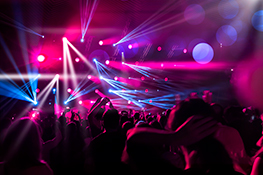Stage Lighting Safety Regulations: A Comprehensive Overview
Understanding the Risks: Why Safety is Paramount
Stage lighting, while crucial for creating captivating performances, presents inherent safety risks if not handled correctly. Improper installation, faulty equipment, and inadequate training can lead to serious accidents, including electrical shocks, burns, falls, and even fires. Adhering to stringent safety regulations is not merely a legal requirement; it’s a fundamental responsibility to protect performers, crew members, and audience members alike. This comprehensive guide delves into the key aspects of stage lighting safety regulations to ensure a secure and successful production every time.
Electrical Safety: The Foundation of Stage Lighting Regulations
Electrical safety is the cornerstone of any stage lighting setup. Regulations often mandate the use of certified equipment, regular inspections, and the implementation of robust grounding systems. Understanding the importance of Residual Current Devices (RCDs) or Ground Fault Circuit Interrupters (GFCIs) is paramount. These devices detect ground faults and immediately cut off the power, preventing potentially fatal electrical shocks. Proper cable management, avoiding overloading circuits, and using appropriate connectors are equally vital for preventing electrical hazards. Furthermore, regular testing of all electrical components is a non-negotiable aspect of responsible stage lighting practice.
Rigging and Hanging: Ensuring Structural Integrity
The safe hanging of lighting fixtures is critical and often governed by strict regulations. This involves using appropriately rated chains, ropes, and other rigging hardware, ensuring proper weight distribution, and regularly inspecting all rigging points for signs of wear and tear. Understanding the weight limits of trusses and other support structures is vital, along with adhering to safe working practices during installation and dismantling. Furthermore, many jurisdictions require certified riggers for large-scale productions, emphasizing the high stakes involved.
Heat and Fire Safety: Preventing Catastrophic Events
Stage lighting fixtures generate significant heat, particularly incandescent and some LED lights. Regulations often address this by setting minimum distances between lights and flammable materials, specifying the use of fire-resistant materials in stage construction, and requiring the implementation of appropriate fire detection and suppression systems. Understanding the thermal properties of lighting equipment and its surroundings is crucial for preventing fires and ensuring the safety of everyone involved.
Emergency Procedures and Training: Proactive Risk Management
Comprehensive emergency procedures are crucial for mitigating risks and ensuring a swift, coordinated response in case of an accident. These procedures should cover everything from electrical hazards to falls from heights and should be readily accessible to all crew members. Moreover, regular safety training for all personnel involved in the handling and operation of stage lighting is mandatory in many jurisdictions. This training should cover risk assessment, safe handling procedures, emergency response protocols, and the proper use of safety equipment.
Compliance and Inspections: Maintaining a Safe Environment
Regular inspections by qualified personnel are crucial for ensuring ongoing compliance with safety regulations. These inspections should cover all aspects of the lighting system, including electrical wiring, rigging equipment, and the overall condition of the fixtures. Documentation of these inspections is equally important for maintaining a record of compliance and identifying potential issues before they escalate into accidents. Staying updated with the latest safety regulations and technological advancements in stage lighting is an ongoing responsibility for ensuring a secure working environment.
Staying Ahead of the Curve: Future Trends in Stage Lighting Safety
The field of stage lighting is constantly evolving, with new technologies and techniques emerging regularly. Staying informed about these developments and understanding how they impact safety regulations is vital for maintaining the highest standards of safety. This involves staying up-to-date with industry best practices, attending relevant workshops and conferences, and actively engaging in ongoing professional development. By embracing these proactive measures, the industry can collectively work towards a future where stage lighting is both captivating and utterly safe.


 Auditorium Construction Services
Auditorium Construction Services 